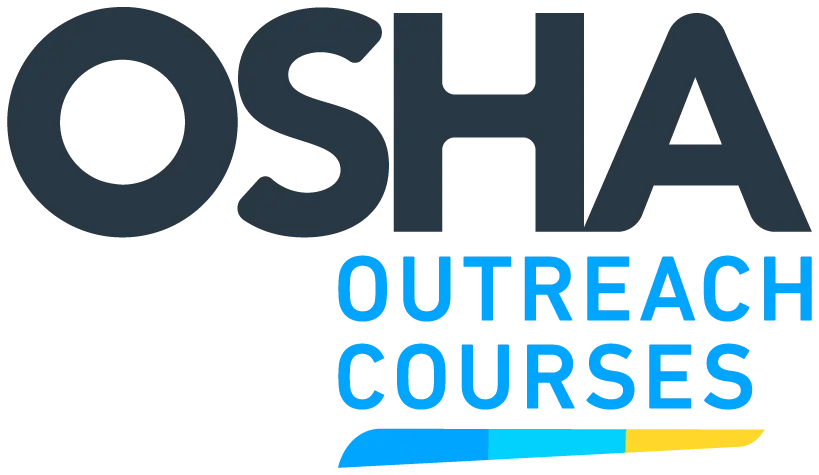DOT/EPA Hazardous Materials Suite
Practice Test
DOT/EPA Hazardous Materials Suite Quiz
Complete this quiz to earn an exclusive Certificate of Completion from OSHAOutreachCourses.com. Read all the questions carefully and mark the right answers to earn the perfect score. Best of luck!
Total Questions: 5
Why Workers Choose Us
| features |  |
other providers |
|---|---|---|
| Instant Downloadable Certificate | ||
Free Study Guide

|
||
Discounts For Businesses

|
||
| No Hidden Cost | ||
Mobile Compatibility

|
||
Flexible Learning

|
LEARN MORE ABOUT DOT/EPA Hazardous Materials Suite
Satisfied Customers
Learning Objectives
- Understand the purpose and scope of the Resource Conservation and Recovery Act (RCRA) and its role in hazardous waste management.
- Identify and classify hazardous waste based on EPA definitions, characteristics, and generator categories.
- Recognize DOT requirements for hazardous materials transportation, including shipping papers, packaging, marking, labeling, and placarding.
- Describe the responsibilities of shippers and carriers across highway, rail, air, and water transport modes.
Course Outline
Resource Conservation and Recovery Act (RCRA) Part 1 (US)
-
1. Introduction
- Welcome
- A Little Background…
- Learning Objectives
-
2. Hazardous Waste Determination
- Solid Waste Definition
- Hazardous Waste Determination
- Hazardous Waste Determination: Two Ways
- Hazardous Waste Conditions
- Hazardous Waste Characteristics: Ignitability
- Hazardous Waste Characteristics: Corrosivity
- Hazardous Waste Characteristics: TCLP
-
3. Sources
- Hazardous Waste Lists
- Hazardous Waste Mixtures
-
4. Waste Generation
- Waste Determination Responsibility
- Categories of Hazardous Waste Generators: Very Small
- Categories of Hazardous Waste Generators: Small
- Categories of Hazardous Waste Generators: Large
- Categories of Hazardous Waste Generators: Acutely Hazardous
-
5. Generator Status
- Determining Your Generator Status
- Determining Your Generator Status: Exemptions
-
6. Accumulation and Storage
- Managing Hazardous Waste On-Site
- Storing Hazardous Waste On-Site
- Accumulating Hazardous Waste On-Site
- Accumulating Wastes in Tanks
-
7. Shipping
- Shipping Hazardous Waste Off-Site
- Shipping Hazardous Waste Off-Site: Transporter
- Shipping Hazardous Waste Off-Site: Packaging
- Shipping Hazardous Waste Off-Site: Manifest
- Shipping Hazardous Waste Off-Site: Copies
- Hazardous Waste Manifest
- Who Is Responsible for the Waste?
-
8. Conclusion
- Conclusion
Resource Conservation and Recovery Act (RCRA) Part 2 (US)
-
1. Introduction
- Welcome
- Introduction: Preparing for and Preventing Accidents
- What Would You Do?
- Learning Objectives
-
2. Prepare for and Prevent Accidents
- Preparing for and Preventing Accidents
-
3. Planning for Emergencies
- Contingency Plan
- Emergency Procedures
- Fires and Spills
- National Response Center
- Emergency Phone Numbers
- Emergency Coordinator
-
4. Training
- Training
- Training Topics
-
5. Waste Management Strategies
- Good Housekeeping and a Safe Environment
- Recycle, Treat, Reduce
- Minimizing Waste
- Cost Reduction
-
6. Inspections
- Inspections
- Preparing for an Inspection
-
7. Conclusion
- Conclusion
HAZMAT Transportation Awareness (US)
-
1. Introduction to Hazardous Materials
- Welcome
- Your Job Matters
- Goals
-
2. What Are Hazardous Materials?
- Dangers
- How We Use Hazardous Materials
-
3. Transportation
- Transportation
- HAZMAT
-
4. Regulations
- The Risk HAZMAT Poses
- Enforcing Highway Safety
- Hazardous Materials Regulations (HMR)
- HMR Rules
-
5. Responsibilities
- HAZMAT Training
- HAZMAT Responsibilities
-
6. Conclusion
- Summary
- Next Steps
HazMat Transportation - Part 1 - The Hazardous Materials Table (US)
-
1. Introduction
- Welcome
- Introduction
- Learning Objectives
- HMT
-
2. Columns 1 and 2
- Proper Shipping Names
- Proper Shipping Name Modifications
- Qualifying Words
- Symbols
-
3. Columns 3 to 5
- Hazard Class or Division
- Identification Number
- Packing Group
-
4. Columns 6 to 10
- Label Codes
- Special Provisions
- Packaging
- Quantity Limitations
- Vessel Stowage
-
5. Appendices
- 172.101, Appendix A
- Marine Pollutants
-
6. Conclusion
- Conclusion
HazMat Transportation - Part 2 - Shipping Papers (US)
-
1. Introduction
- Welcome
- Introduction
- Learning Objectives
-
2. Shipping Papers Information
- What Are Shipping Papers?
- Shipping Paper Exceptions
- Completing Shipping Papers
-
3. Shipping and Basic Description
- Shipping Description
- Basic Description
- Basic Description Modifications
-
4. Additional Description
- Additional Description Requirements
- Description Requirements by Mode of Transport
- Additional Entries
-
5. Certification and Manifest
- Emergency Response Number
- Shipper's Certification
- Shipper Certification Exceptions
- Hazardous Waste Manifest
-
6. Summary
- Summary
HazMat Transportation - Part 3 - Packaging (US)
-
1. Introduction
- Welcome
- Introduction
- Learning Objectives
-
2. Terminology and Responsibilities
- Terminology
- Responsibilities
-
3. Using the HMT
- Packaging Requirements
- Exceptions and Special Provisions
- Limited and Small Quantity Exceptions
-
4. Specific Requirements
- UN Standard Packaging
- Package Requirements
- Air Shipments
- Liquid Hazardous Materials
- Overpacks
- Special Permits
- Forbidden Materials
-
5. Special Packaging
- Leaking or Damaged Packages
- DOD Packaging
- Reusable Packaging
- Empty Packaging
- Agricultural Products Exception
-
6. Exceptions
- Materials of Trade Exception
- Lab Pack Exception
-
7. Conclusion
- Conclusion
HazMat Transportation - Part 4 - Marking (US)
-
1. Introduction
- Welcome
- Introduction
- Learning Objectives
-
2. Bulk and Non-bulk Packaging
- Marking Non-bulk Packaging
- Marking Bulk Packaging
- Identification Number Marking
- Special Provisions for Identification Number Markings
- Additional Bulk Packaging Marking Requirements
-
3. General Marking Requirements
- General Marking Requirements
- Liquid Hazardous Materials
- Limited Quantities
- ORM-D Designation
-
4. Hazardous Materials
- Hazardous Substances
- Marine Pollutants
- Infectious Substances
- Elevated-Temperature Materials
- Marking Certain Hazard Classes
-
5. Conclusion
- Conclusion
HazMat Transportation - Part 5 - Labeling and Placarding (US)
-
1. Introduction
- Welcome
- Introduction
- Learning Objectives
-
2. Labeling and Placarding Requirements
- Providing and Affixing Placards
- Labeling and Placarding Requirements
- Exceptions
- Prohibitions
- Specifications
- Modifications
- Labeling and Placarding Tables
-
3. Labels
- Labeling Subsidiary Hazards
- Labeling Hazardous Materials
- Radioactive Labels
-
4. Placards
- Placarding Tables
- Placarding Hazardous Materials
- Placarding Subsidiary Hazards
- Table 2 Exceptions
- DANGEROUS Placard
- Placarding Empty Bulk Packaging
-
5. Special Provisions and Exceptions
- Freight Containers and Aircraft Unit Load Devices
- Special Rail Provisions
- Placarding Exceptions
-
6. Conclusion
- Conclusion
HazMat Transportation - Part 6a - Carrier Requirements - Highway (US)
-
1. Introduction
- Welcome
- Introduction
- Learning Objectives
-
2. General Requirements
- HAZMAT Requirements
- Owner-Operator Training
- Federal Motor Carrier Safety Regulations
- Shipping Papers
- Shipping Paper Accessibility
-
3. Loading and Unloading
- General Loading and Unloading Requirements
- Loading and Unloading Tanks
- Special Loading and Unloading Requirements
-
4. Segregation Requirements
- Special Requirements for Radioactive Materials
- Segregation Table
- Segregation Table Examples
-
5. Special Situations
- Emergency Situations
- Passenger Carrying Vehicles
- Reporting HAZMAT Incidents
-
6. Conclusion
- Conclusion
HazMat Transportation - Part 6b - Carrier Requirements - Air (US)
-
1. Introduction
- Welcome
- Introduction
- Learning Objectives
-
2. Regulations and Responsibilities
- Training Requirements
- Air Carrier Requirements
- International HAZMAT Regulations
- Shipper and Carrier Responsibilities
-
3. Subpart A Requirements
- Subpart ‘A’ of Air Carrier Requirements
- Safe Operation of Aircraft
- Specialized Air Operations
- Personal Use Materials
- Notification of HAZMAT Restrictions
- Packaging Requirements
- Additional Packaging Requirements
- Overpacks
- Shipping Papers and Notification of PIC
- Receiving and Maintaining Shipping Papers
- Reporting Discrepancies
-
4. Subpart B Requirements
- Subpart ‘B’ of Air Carrier Requirements
- Quantity Limitations: Cargo Aircraft
- HAZMAT Stowage
- Segregation
-
5. Subpart C Requirements
- Subpart ‘C’ of Air Carrier Requirements
-
6. Reporting Incidents
- Reporting HAZMAT Incidents
-
7. Conclusion
- Conclusion
HazMat Transportation - Part 6c - Carrier Requirements - Rail (US)
-
1. Introduction
- Welcome
- Introduction
- Learning Objectives
-
2. Transporting HAZMAT
- HAZMAT Documentation
- Inspection
- Leaking HAZMAT Packages
- Expediting and Removing HAZMAT Shipments
-
3. Handling and Loading HAZMAT
- General Handling and Loading Requirements
- Unloading Tank Cars
-
4. Segregation and Car Positioning
- Segregation
- Markings and Placards
- Switching Rail Cars
- Placarded Rail Car Position
- Additional Placement Restrictions
-
5. Industry Rules and Reporting Incidents
- Key Trains and Key Routes
- Reporting HAZMAT Incidents
-
6. Conclusion
- Conclusion
HazMat Transportation - Part 6d - Carrier Requirements - Water (IMDG) (US)
-
1. Introduction
- Welcome
- Introduction
- Learning Objectives
-
2. IMDG
- IMDG
-
3. HAZMAT Responsibilities
- HAZMAT Responsibilities
- Shipping Documentation
- Vessel Preparation
-
4. Stowage
- Supervision
- Stowage Locations
- Stowage Requirements
- General Segregation of Hazardous Materials
- Segregation Restrictions
- Additional Segregation Tables
-
5. Special Requirements
- Special Requirements
- Detailed Requirements
-
6. Explosives
- Class 1 Explosives
- Stowage of Explosives
- Explosives Permitted on Passenger Vessels
-
7. Inspections
- Inspections
-
8. Emergencies and Repairs
- Emergency Situations
- Vessel Repairs
-
9. Reporting Incidents
- Reporting HAZMAT Incidents
-
10. Conclusion
- Conclusion
HazMat Transportation - Part 7 - Security Awareness (US)
-
1. Introduction
- Welcome
- Introduction
- Learning Objectives
- Lessons from History
- Why Transport Hazardous Materials?
-
2. DOT Requirements
- Training
- Security Plans
-
3. Potential Targets and Threats
- What If…?
- Potential Targets
- Potential Threats
- Be Aware
-
4. Planning a Safe Route
- Planning Your Route
-
5. Protecting Yourself and Your Cargo
- Keep Yourself and Your Cargo Secure
-
6. Carrier Security Responsibilities
- How Carriers Can Help
- Prevention
- Security Checklists
- Responsible Hiring Practices
- Facility Security Plans
-
7. Industry Guidelines
- Other Industry Guidelines
-
8. Summary
- Summary
Training Process
This course has no prerequisites for the DOT hazardous waste training. It is suitable for anyone involved in the handling, management, or transportation of hazardous materials.
Group Discount for Corporate Accounts

VIDEO TESTIMONIAL
FAQ
What is DOT hazardous materials training?
Who should enroll in DOT training online?
In which language you can do online DOT training for hazardous material?
What topics are covered in DOT/EPA hazardous materials training?
How much time does this online hazmat training take to complete?
What are the consequences of non-adherence with DOT hazardous materials training requirements?
Are there different levels of EPA and dot training requirements for shipping hazardous materials training?
Job Aid DOT/EPA Hazardous Materials Suite PDF
Join our mailing list
Get announcements, industry updates and promotional offers.
17350 TX-249 Ste 220 19204, Houston, TX 77064, United States







